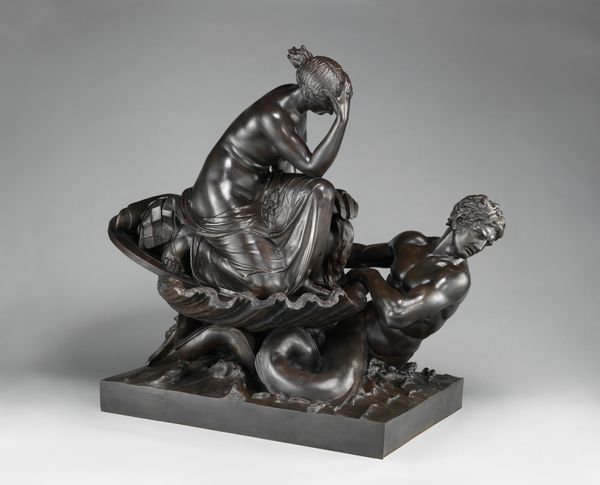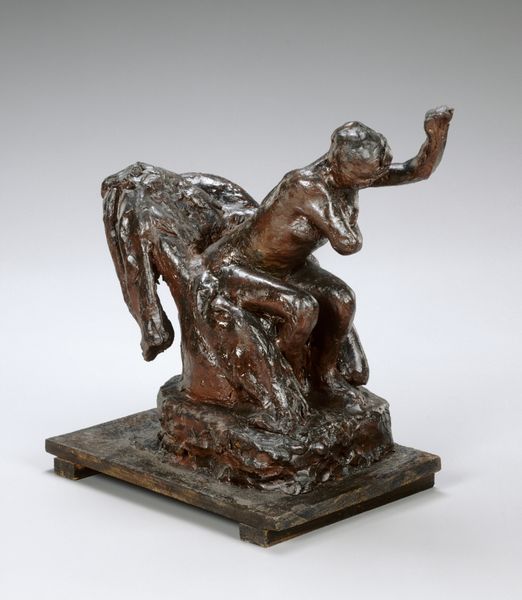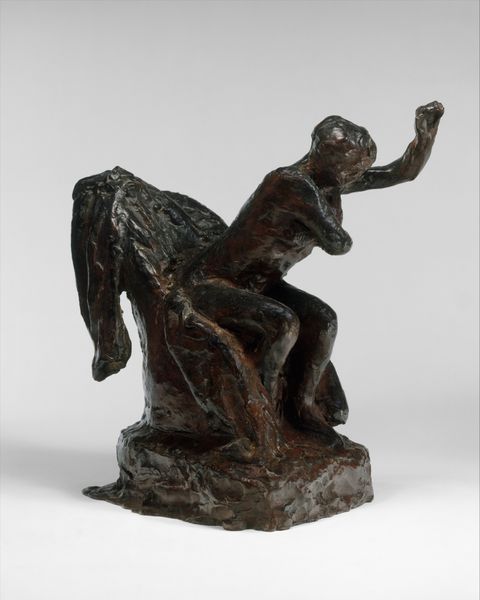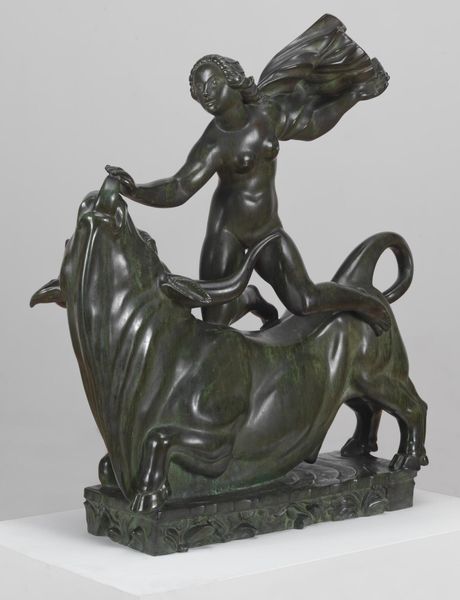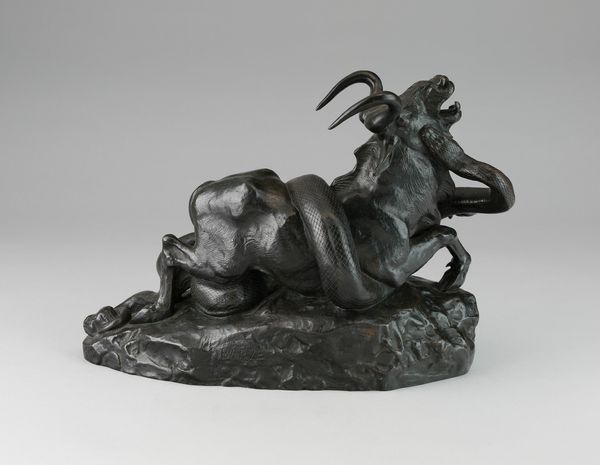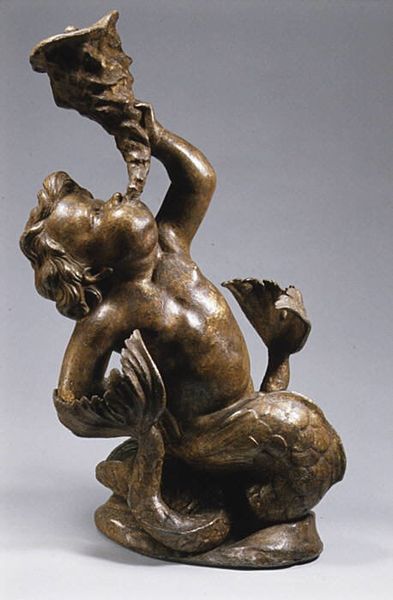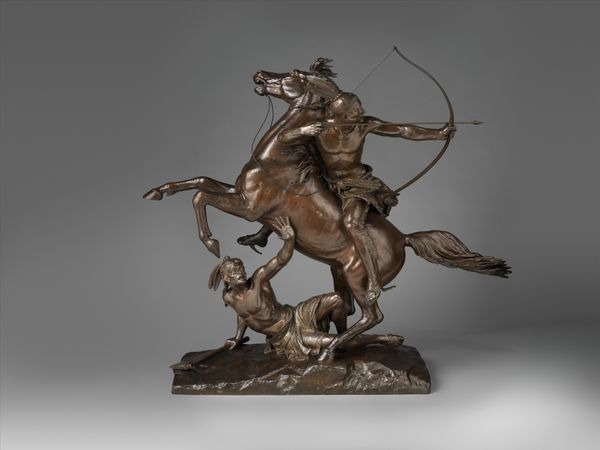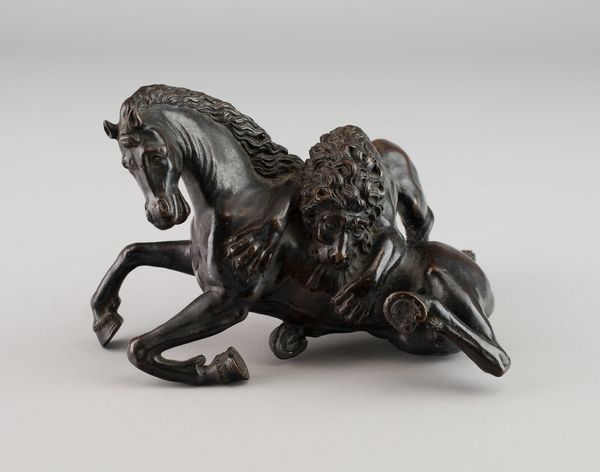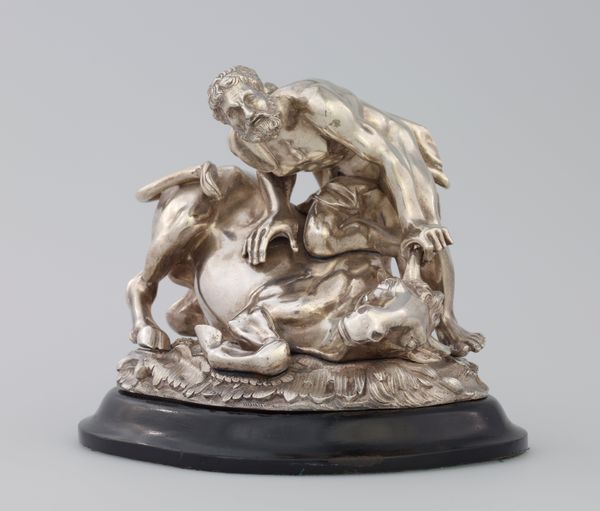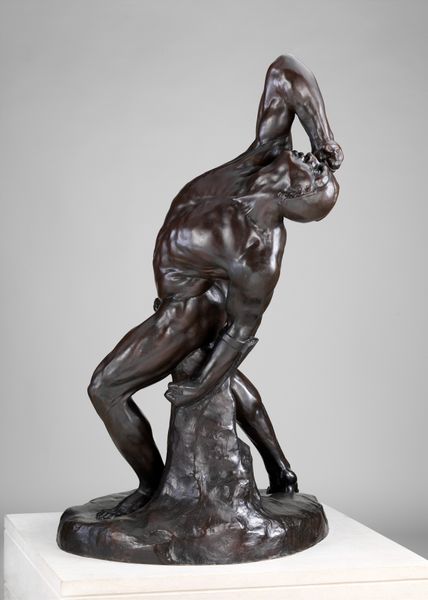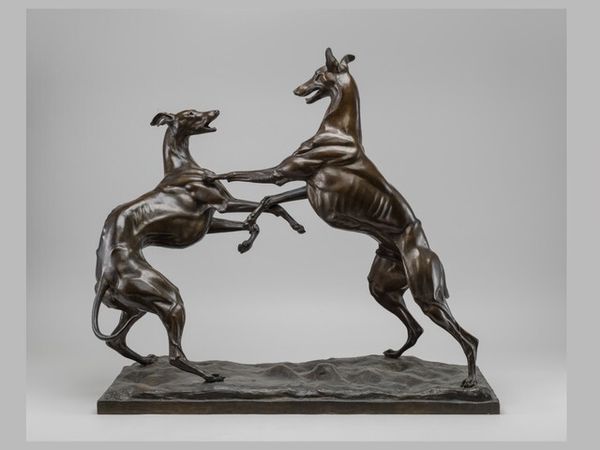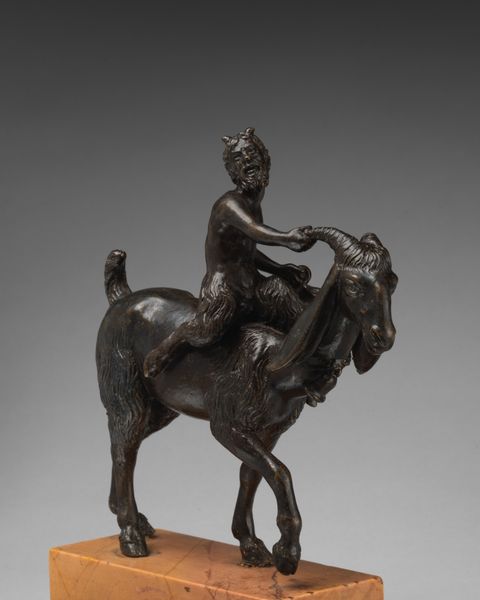
metal, bronze, sculpture
#
metal
#
stone
#
sculpture
#
bronze
#
mannerism
#
figuration
#
sculpture
#
history-painting
#
decorative-art
Dimensions: Overall: 21 3/4 × 16 in. (55.2 × 40.6 cm)
Copyright: Public Domain
Giambologna sculpted Hercules and the Cretan Bull in bronze in the late 16th century. Hercules’s struggle with the bull, one of his twelve labors, represents virtue overcoming brutish nature. The sculpture was produced in Florence, a center for the revival of classical art and humanist thought. The Medici court promoted this revival. The story of Hercules resonated with its ambitions of power and cultural authority. Hercules was a symbol of strength and justice. The statue’s dynamic composition and idealized anatomy showcased Giambologna’s mastery and the sophistication of Florentine art. It served to project the court’s image of power and refinement. By exploring the cultural and historical context of Hercules and the Cretan Bull, one can gain a deeper understanding of its meaning and significance. Researching patronage, artistic conventions, and the social values of the time can help us appreciate this work as more than just a display of skill. It is a reflection of the complex interplay between art, power, and society.
Comments
No comments
Be the first to comment and join the conversation on the ultimate creative platform.
